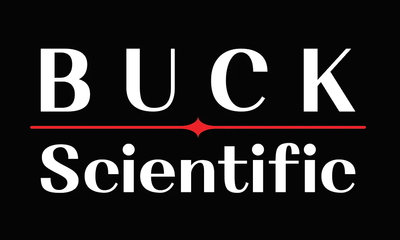

Buck Scientific Inc
- Home
- Companies & Suppliers
- Buck Scientific Inc
- Downloads
- IR3002 A 5-minute `Backdoor` Quality ...
IR3002 A 5-minute `Backdoor` Quality Control Screen Method for Incoming Raw Material in Pharmaceutical Manufacturing Processes - Application Notes
A 5-minute Screening Method for Incoming RawMaterials in Pharmaceutical ManufacturingProblemNormal quality control procedures involveaccepting a “lot” of a raw material from asupplier and then performing a series of tests todetermine if the material is suitable for use in amanufacturing process. For the drugmanufacturing industry, as well as many others,this is both a critical and time-consuming (andoccasionally costly) step in the process. If thesample is not homogeneous or is segregated,there will be errors. Many of the standardmethods for these tests are very labor-intensiveand operator-dependent manual methods, addingadditional variability. If the material is deemedunacceptable, additional costs are incurred toreturn the material, since the shipper usuallyleaves the premises before the testing iscompleted. Time, money and ultimately qualityare expensive commodities in the manufacturingquarter.PrincipleOrganic molecules have the ability to absorbunique wavelengths of radiation from the infra-red spectrum and then generate absorption bandspectra. These spectra are quite specific to eachcompound, actually creating a “fingerprint” for agiven compound. The power of digital CPU-based software, relative to classical analogcharts, gives the analyst the ability to rapidlycompare the spectrum of one compound to thatof another in mere seconds, and then calculatethe percentage difference, if any.PracticeA new batch of incoming samples is placed onthe inert crystal of the PLC-11M reflectancePrism Cell accessory and scanned with the BuckScientific Model IR system. The spectrum isprocessed using GRAMS?/IR Software to createan absorbance scan. A “library” of knownmaterials is made by scanning previous lots ofboth acceptable (good) and rejected (bad)product. The spectrum of incoming material is“searched” and compared to this library and a listof matches is shown. If the majority of the“hits” are good, the material is accepted and thetruck unloaded. Should the hit-list come upmostly bad, the result is faxed to the supplierwith a little note and the shipper is sent to returnthe material. The entire procedure, from initialcollection of the sample to final results, is lessthan 5 minutes If there is any questionregarding the conclusions made from theanalysis, there are several macro routinesavailable for the GRAMS/IR software, includingspectral equivalency. This compares 2 spectraand calculates the percentage difference betweenthem. By assigning a maximum tolerancespecification to this test, a quick PASS / FAILassay can be made with tremendous precision.Analyst: Gerald J. DeMennaSIC: 131, 14, 20, 226, 229, 26, 275, 28, 29, 308, 321, 873Application Note#IR3002 Problem Principle Practice Analyst: Gerald J. DeMenna
Most popular related searches
Stay in the loop!
Select your areas of interest to receive industry updates.
